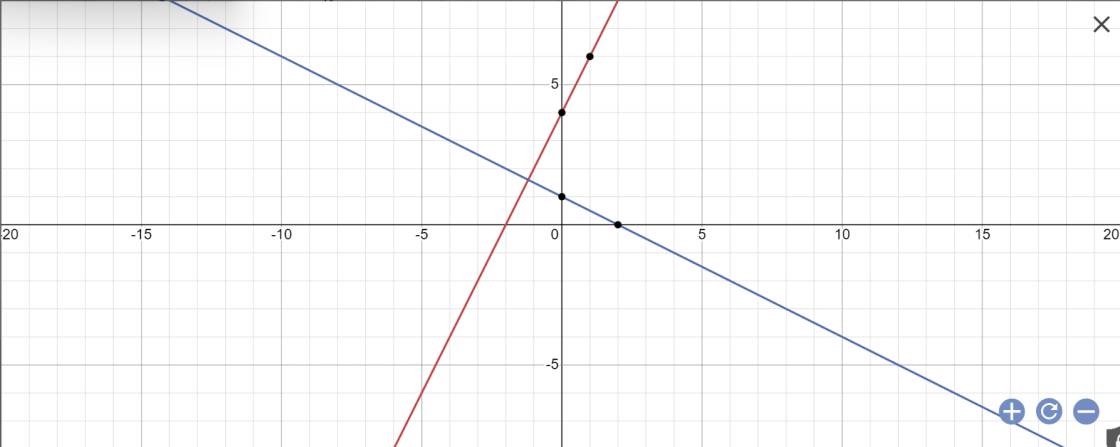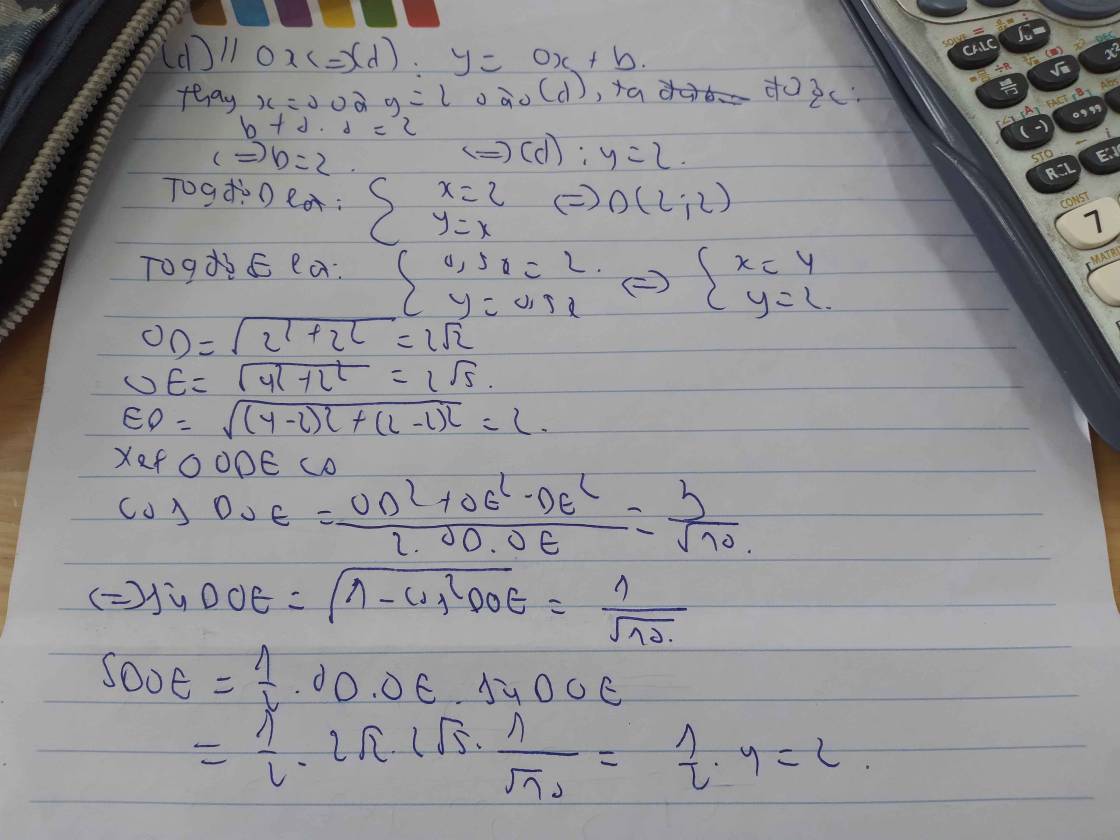Bài 1 : Cho đường thẳng (d1):y -2x và đường thẳng (d2):y 4x + 1a. Vẽ hai đường thẳng trên hệ trục tọa độ Oxy.b. Tìm giao điểm A và B của (d2) với trục hoành và trục tung.c. (d1) cắt (d2) tại điểm D. Tính diện tích các tam giác OAD, OBD, OAB. Bài 2 : Cho đường thẳng (d1):y 2/3x + 4 và đường thẳng (d2) :y 2xa. Vẽ hai đường thẳng trên hệ trục tọa độ Oxy.b. (d1) cắt trục hoành và trục tung tại M và N, (d1) cắt (d2) tại P. Tìm tọa độ M, N, P.c. Tính diện tích tam giác OMN, ONP và MOP.d. Dựng Oh v...
Đọc tiếp
Bài 1 : Cho đường thẳng (d1):y = -2x và đường thẳng (d2):y = 4x + 1
a. Vẽ hai đường thẳng trên hệ trục tọa độ Oxy.
b. Tìm giao điểm A và B của (d2) với trục hoành và trục tung.
c. (d1) cắt (d2) tại điểm D. Tính diện tích các tam giác OAD, OBD, OAB.
Bài 2 : Cho đường thẳng (d1):y = 2/3x + 4 và đường thẳng (d2) :y = 2x
a. Vẽ hai đường thẳng trên hệ trục tọa độ Oxy.
b. (d1) cắt trục hoành và trục tung tại M và N, (d1) cắt (d2) tại P. Tìm tọa độ M, N, P.
c. Tính diện tích tam giác OMN, ONP và MOP.
d. Dựng Oh vuông góc với (d1) tại H. Tính độ dài MN, OH, HN, HM.















